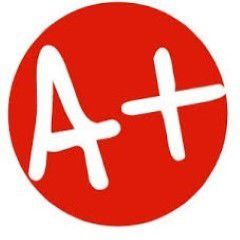UMUC IT Acquisitions Management Individual Project
Individual Project
Activity 1. Identify or select a performance problem in a business activity that you believe could be resolved or substantially improved by the acquisition of IT services performed by a contractor selected in open competition as a result of an RFP (request for proposal). The acquisition of IT services may also include the acquisition of IT software and hardware, as needed. Document your performance problem as Activity 1 using Template 1 provided by IT Economics Corporation. Available at: http://www.iteconcorp.com/T1PerformanceGap.html
Why do you need to select a business performance problem that will require the acquisition of IT services (and products as needed) from an external IT services contractor? It is the most important form of IT acquisitions. It involves the largest investments and is instrumental in transforming organizations and achieving competitive advantage. At the same time, it presents the greatest risk, with the probability of project failure increasing as the size and complexity of the projects increase. On the other hand, IT hardware and software acquisitions that do not involve services are usually "commodity purchases" (as explained below) and lack the challenges and complexity of acquisitions that involve IT services. The templates used in this course are for IT acquisitions that include IT services. They are not meant for use with IT commodity purchases. Commodity Purchases. Commodity purchases from vendors usually come with incidental services, such as installation and certain support services. These do not qualify as "contractor services." An IT product is considered a "commodity" when there is a common definition of the good, the contracts for its purchase are for the most part standardized, and there are common qualities or service levels associated with the good. (On the other hand, your problem can require the selection of a contractor--via an RFP--that, for example, helps your organization identify, evaluate, decide on, and implement one or more IT commodity products.)
For example, going out and buying a printer is a commodity purchase. Buying 20 laptop computers is a commodity purchase. Buying 15 copies of a software application is a commodity purchase. The decision to buy the commodity means that the problem has been solved and the commodity is the solution. However, hiring an IT contractor to help design a system, acquire the hardware and software needed by the system, and assist in implementing the system is NOT a commodity purchase. It is the acquisition of IT services.
Although you must select a performance problem that requires the services of an external contractor, you will not be asked to prepare a request for proposal (RFP) for an external
contractor. Instead, you will prepare a basic performance-based work statement--the heart of an RFP--using one of the templates provided.
What Not To Select. Since the solution to your problem must require the services of an IT contractor who is (theoretically) to be selected in open competition as the result of an RFP, there are certain types of problems you should not select.
• Do not select a problem that can be solved with better internal management or a different use of internal resources, such as using the organization's programmers to develop or modify certain software systems.
• Do not select a problem that can be solved by adding to the tasks of a current contractor.
• Do not select a problem that can be solved by your organization making its own commodity purchase from a vendor (e.g., a server, Internet service) without the involvement of a contractor selected in open competition after issuing an RFP.
Real Rather Than Fictitious. The problem should be real and for a real organization you are with now or one that you know about. It is recommended that you use a real organization as the context for your project so that the realities of the organization, including the constraints it must contend with, can be taken into account in planning your project. Basing an individual project on a fictitious organization provides no real world challenge since there are no real constraints. There is no need to identify the organization and do not divulge confidential information or information that the organization might find objectionable for you to reveal. Further, you only need to obtain data that are readily available. For data that are not readily available, reasonable estimates will do.
Three-Month Rule.
A rule of thumb is to select a problem requiring an IT acquisition project that spans at least three months (though it can be much longer). The idea is to keep the size of the project from being no larger than needed for you to gain the insights from using the acquisition templates but not so small that it will make using the templates trivial and meaningless. Projects shorter than three months generally fall into the latter category. The problem should be such that the organization would be sufficiently concerned with the cost, risk, and need for success that it will go through the various acquisition steps, including competition among contractors (sources), in order to control cost, manage risk, and increase the likelihood of success.
Guidance in Using the Templates. Your individual project will use a total of 12 best practice templates/models involving activities ranging from requirements definition to preparation of a performance-based statement of work. You will be given explanations and, in most cases, examples, of how to use the templates to perform your individual project activities. These are activities that are key in IT acquisition projects.
Examples of Problems Selected by Other Students (DO NOT USE OR PLAGERIZE). Here are some examples of problems that past students have addressed with their individual projects:
• Problem of membership maintenance (club, church, etc.)
• Problem of controlling financial contributions
• Lack of an effective activity reporting system (e.g., for employees)
• Lack of a PowerPoint slides management and inventory system in a large organization
• Need for a better forecasting system of recruitment needs
• Problem of tracking and reporting production
• Problem of preparing accurate and timely reports
• Problem of sharing real-time information with key persons
• Problem of timely analysis of data
• Problem of selectively distributing analytical reports to groups
• Problem of tracking loans
• Problem of controlling access to computer services
• Chronic inability to test computer software as planned
• Problem of effectively managing assets
• Problem of controlling large numbers of documents
• Problem of gathering and integrating information quickly against deadlines
• Problem of controlling electronic documents
• Problem of a slow network that is used for online training
• Problem of professional billing control for a group of lawyers (could be for any group)
Document Your
1. Individual Project Assignments
You completed Activity 1 of your project, which was to identify a tentative solution to a business need. Now you can proceed to the next three activities of your project. Activities 2 through 4 are closely related, so it is best to do them together. Although each requires careful thought, they generally are not overly time intensive to perform.
Before you prepare Activities 2-4, though, be sure to revise your Activity 1 if the feedback from the instructor recommends that you do so. All of your subsequent activities will be based on your Activity 1, and the feedback from the instructor is intended to help make it easier for you to prepare subsequent Activities of good or superior quality.
You do not need to submit your revised Activity 1 until the end date of Session 4 when you need to also submit Activities 2-6. Completing Activities 2-6 may give you insights that may make you want to further revise your Activity 1. Take advantage of these insights to make final revisions in your Activity 1 before submitting Activities 1-6 via your Assignments Folder at the end of Session 4.
Activity 2. Document Requirements. Define and document the requirements to solve the problem you identified. Use Template 2, located in the IT Economics Corporation reading titled Defining and Documenting IT Acquisition Requirements to document the requirements for solving the business performance problem. Available at: http://www.iteconcorp.com/T2RequirementsDevelopment.html
Activity 3. Summarize Alternative Solutions. Identify and document alternative solutions that meet the requirements identified in Activity 2. Use Template 3, located in the IT Economics Corp. reading titled Identifying Alternative Solutions. Fill in the template with your information to complete this activity. Provide at least three alternative solutions. Keep in mind that the status quo is not an alternative solution. Available at: http://www.iteconcorp.com/T3T4IdentAlts.html
Activity 4. Analyzing Alternative Solutions. In this activity, you enter your three or more alternative solutions, analyze them, and rank them based on how well they meet the Activity 4 criteria. (In Activity 5, the risk analysis will be used to screen out all but the two best alternative solutions, taking into account benefits, cost, and risk.) Template 4 for Activity 4 is available at: http://www.iteconcorp.com/T3T4IdentAlts.html
Activities 2 through 4, the final version of your Activity 1, and Activities 5 and 6 need to be posted in your Assignment Folder no later than the end date of Session 4. . Take into account the online comments you receive on your Activity 1 and revise it as needed. Also, as you complete Activities 2 through 4, you may gain insights on ways to improve your Activity 1. You should make those changes before you post your revised-as-needed Activity 1 in your Assignments Folder on or before the end date of session 4. According to the WebTycho User Guide, you can post each Activity in your Assignment Folder as you complete it anytime before the instructor marks it Read or Graded. I will not mark Activities Read or Graded until after the due date for the activities.
Activity 5. Develop a work breakdown structure (WBS) for each of your two or three alternative solutions to your performance problem. The link at the end of this paragraph leads to the IT Economics WBS reading, which includes an explanation of how to develop a WBS and illustrations of work breakdown structures. The illustrations can serve as a model for your preparation of Activity 5. The explanation and illustrations should give you an idea of the level of detail appropriate for the WBS required for each of your two alternative solutions. The reading is available at: http://www.iteconcorp.com/T5WorkBreakdownStructure.html The due date for posting your completed Activity 5 in your Assignments Folder is the end date of Session 4. (Activities 1 through 6 need to be posted in your Assignments Folder by the end date of the next session, which is Session 4.)
Activity 6. Perform a Risk Analysis on each of your two or three best alternative solutions to your performance problem. The reading from IT Economics Corp., Risk Analysis of Alternative Solutions, includes a risk analysis template along with five broad risk criteria and their definitions. Also, there are three examples of the use of the template to document a risk analysis. Use this template and the risk criteria to conduct and document a risk analysis for each of your alternative solutions. The reading with template is available at: http://www.iteconcorp.com/T6RiskAnalysis.html
In using this template for this course, you are not expected to do as thorough a risk identification as would be required in an actual project. You are expected, though, to identify the major risks associated with the alternative solutions for your project. Also, you need to have a minimum of two viable alternative solutions after you perform the risk analysis and screen out any too-risky solutions. The two best alternative solutions are needed in order to use the remaining templates. The risk analysis can help you to identify areas in which risk mitigate strategies can and should be used.
Activity 7. Prepare Economic Analyses. The two work breakdown structures you prepared in Activity 6, along with their supporting data, should provide you with much if not all of the information needed to perform an economic analysis on each of your two final alternative solutions. Use the Economic Analysis Worksheet provided in the Economic Analysis reading from IT Economics Corporation. The reading and template are available at: http://www.iteconcorp.com/T7EconomicAnalysis.html
You need to submit two completed Economic Analysis Worksheets, one for each of your two final alternative solutions. The worksheet is set up so that you can enter each on a separate sheet of the same Economic Analysis Workbook. All you need do for each worksheet is enter the name of your project, the project cost by calendar year, the benefits by calendar year, and risk probability data for each calendar year. Detailed instructions for completing the worksheets are provided in the Workbook. You should rely on the information you generated in preparing the WBS's for each of your two best alternatives, which will help you make reasonable estimates for the calendar year(s). Submit the actual Economic Analysis Workbook Excel file that you downloaded and used to enter information for your two alternatives. Do not put the Economic Analysis worksheets into a Word document or a pdf file.
Special Note: The worksheet from IT Economics Corporation is "locked" so that only the information needed can be entered and the formulas can't be changed to distort the spreadsheet results. Anyone can purchase software that unlocks spreadsheets. However, unlocking an economic analysis spreadsheet is not permitted in organizations because then the data it contains cannot be trusted. Moreover, the Workbook is copyrighted by IT Economics Corporation and there are ethical and legal issues that arise from tampering with copyrighted software. There is no need to unlock the spreadsheet and no spreadsheet that is unlocked or modified can be accepted in this course.
Activity 8. Perform a comparative value-risk analysis of the two alternatives, using Template 8 (IT Investment Assessment Rating Form). The template is in the reading from IT Economic Corp. titled Comparative Analysis of Acquisition Alternatives. It is available at:
http://www.iteconcorp.com/T8AnalAlts.html
Use the criteria categories and weights provided in the template to rate your two alternative solutions. Based on the results of your assessments, select the best alternative. In other words, you conclude that it is the best solution to the performance problem because it has the best balance of value and risk for your organization.
Activity 9. Write a value proposition for the alternative you selected. An explanation of how to write a value proposition is provided in the reading titled Value Proposition, which also gives two examples of value propositions. You can model your value proposition after the examples. The reading and examples are available at: http://www.iteconcorp.com/T9Value%20Proposition.html
Activity 10. Develop an Acquisition Strategy Statement for your proposed IT acquisition project (that you selected in Activity 8 and summarized in your Activity 9 value proposition). A template for preparing the statement, titled Acquisition Strategy Statement, is available at this location: http://www.iteconcorp.com/T10StrategyStatement.html
Please use this template to prepare your Acquisition Strategy Statement. Keep your responses to the various sections of the Acquisition Strategy Statement as brief as possible, while still communicating your key points. As you likely know from your own experience, executives like brief, to-the-point documents, preferably only a page or two. They usually don't read lengthy acquisition strategy statements.
Activity 11. Develop a Gantt Chart, using Microsoft Project, for the WBS you created for the alternative solution you selected as best. A discussion of Gantt charts and an illustration of a Gantt chart generated using Microsoft Project are provided at http://www.iteconcorp.com/T11Gantt.html
The illustration is similar to what you will produce for your Activity 11. It illustrates the level of detail appropriate for the Gantt chart you prepare for your project. Submit your Gantt chart as an .mpp file (a file produced by Microsoft Project.).
Activity 12. Prepare the Performance Requirements Summary for your recommended solution. Use the PRS template in the IT Economics document (see link http://www.iteconcorp.com/T12PBWS.html) titled "Performance Work Statements." This statement will be the heart of your request for proposal, assuming you will prepare and distribute one to solicit proposals. (You will not be asked to prepare an RFP in this course.) The IT Economics Template 12 for a Performance Requirements Summary is provided at IT Economics Corporation.
Note: The Template material describes how the PWS and the WBS are related to each other and how they should be cross-referenced. You are not required to cross-reference them for your individual project. Providing PWS Information to Potential Contractors As stated above, the PRS summarizes PWS information. The PWS itself and other parts of the RFP provide contractors with related details. The attached Grants.gov document illustrates the more complete information that potential contractors receive in the RFP. You do not need to prepare a written document such as the Grant.gov attachment. Rather, you need to use Template 12 to prepare your Activity 12. In doing so, you will summarize the required results that would be the heart of the RFP for potential contractors. Post Activity 12 in your Assignment Folder no later than the end date of Session 9. The WebTycho User Guide states that you may submit an assignment repeatedly in your Assignment Folder until the instructor marks it Read or Graded. I will not Read or Grade this assignment until after the due date. Be sure to also submit your Template 12 to Turnitin(so that I can tell you have not copied of anyone else’s work) and include a copy of the results with your Template 12 submittal.
UMUC IT Acquisitions Management Individual Project
Key Performance Indicators and Performance Gaps
What is a KPI (key performance indicator)?
Organizations perform strategic planning to establish str...






Maximus
Senior JournalistSell Your Solution Report Solution Support Center
Online Users
-
 Maximus
Today
Maximus
Today




A+ - Thank you!
Thanks for the positive feedback!